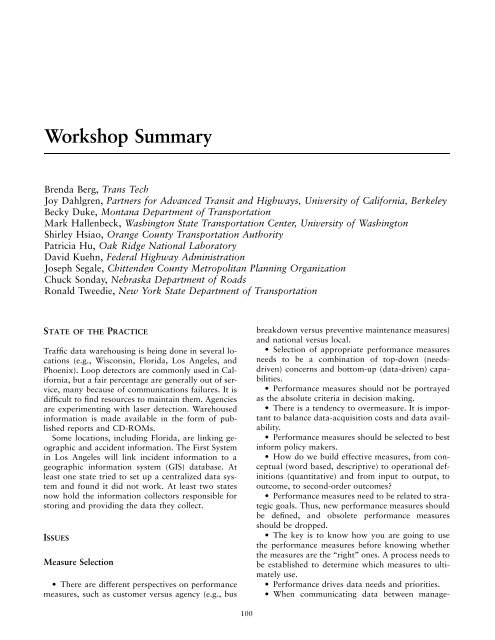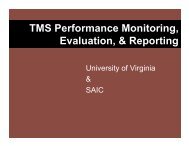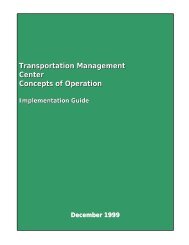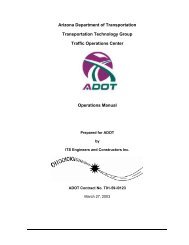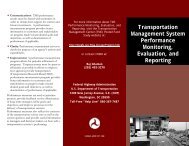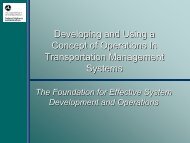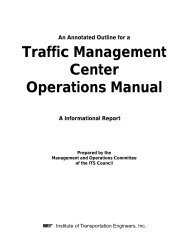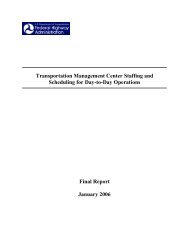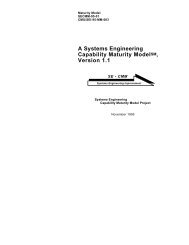Conference Proceedings 26 - Transportation Research Board
Conference Proceedings 26 - Transportation Research Board
Conference Proceedings 26 - Transportation Research Board
- No tags were found...
You also want an ePaper? Increase the reach of your titles
YUMPU automatically turns print PDFs into web optimized ePapers that Google loves.
Workshop SummaryBrenda Berg, Trans TechJoy Dahlgren, Partners for Advanced Transit and Highways, University of California, BerkeleyBecky Duke, Montana Department of <strong>Transportation</strong>Mark Hallenbeck, Washington State <strong>Transportation</strong> Center, University of WashingtonShirley Hsiao, Orange County <strong>Transportation</strong> AuthorityPatricia Hu, Oak Ridge National LaboratoryDavid Kuehn, Federal Highway AdministrationJoseph Segale, Chittenden County Metropolitan Planning OrganizationChuck Sonday, Nebraska Department of RoadsRonald Tweedie, New York State Department of <strong>Transportation</strong>STATE OF THE PRACTICETraffic data warehousing is being done in several locations(e.g., Wisconsin, Florida, Los Angeles, andPhoenix). Loop detectors are commonly used in California,but a fair percentage are generally out of service,many because of communications failures. It isdifficult to find resources to maintain them. Agenciesare experimenting with laser detection. Warehousedinformation is made available in the form of publishedreports and CD-ROMs.Some locations, including Florida, are linking geographicand accident information. The First Systemin Los Angeles will link incident information to ageographic information system (GIS) database. Atleast one state tried to set up a centralized data systemand found it did not work. At least two statesnow hold the information collectors responsible forstoring and providing the data they collect.ISSUESMeasure Selection• There are different perspectives on performancemeasures, such as customer versus agency (e.g., busbreakdown versus preventive maintenance measures)and national versus local.• Selection of appropriate performance measuresneeds to be a combination of top-down (needsdriven)concerns and bottom-up (data-driven) capabilities.• Performance measures should not be portrayedas the absolute criteria in decision making.• There is a tendency to overmeasure. It is importantto balance data-acquisition costs and data availability.• Performance measures should be selected to bestinform policy makers.• How do we build effective measures, from conceptual(word based, descriptive) to operational definitions(quantitative) and from input to output, tooutcome, to second-order outcomes?• Performance measures need to be related to strategicgoals. Thus, new performance measures shouldbe defined, and obsolete performance measuresshould be dropped.• The key is to know how you are going to usethe performance measures before knowing whetherthe measures are the ‘‘right’’ ones. A process needs tobe established to determine which measures to ultimatelyuse.• Performance drives data needs and priorities.• When communicating data between manage-100


